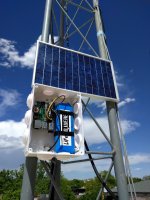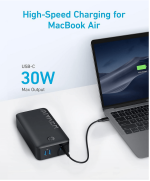Yes, don't mention the war. Well you started it if i remember correctlyLet's not talk about Brexit ! I'm still in denial
Sorry for my absent. I was really busy last week.
Here are some updates of the ReceiverPi DDC.
ReceiverPi DDC is a great solution to build a full function high quality network streamer, DDC or DAC. ReceiverPi DDC works either with a RaspberryPi or as a RPi free project.
A MonitorPro can be used as a good controller of the ReceiverPi DDC. It would be very flexible to integrate with FifoPi, Amanero USB, TransportPi/AES, HdmiPi/Pro, ES9038Q2M Dual Mono DAC and many other boards for a well finished project.
1. Has five inputs: USB, RCA, OPT, I2S over HDMI and RaspberryPi
2. Capable of 768KHz PCM and native DSD 1024 for USB and I2S over HDMI inputs
3. Up to 192KHz for S/PDIF inputs
4. Can work for applications at either RPi free mode or with a RPi
5. All connectors are placed at the side edge of the PCB to make the configuration more organized
6. A MonitorPiPro can be a good controller of the ReceiverPi DDC
7. USB adapter (Amanero or compatible) can be installed at either bottom side for RPi free applications or at top side when works with a RPi
8. Manage music sources and clocks by an advanced FPGA/SoC logic
9. Can be installed on to a PurePi as one of the good power supply applications
10. No need for any software driver.
I'll post more pictures for ReceiverPi DDC based DDC or DAC projects.
 ReceiverPiDDC
ReceiverPiDDC
Here are some updates of the ReceiverPi DDC.
ReceiverPi DDC is a great solution to build a full function high quality network streamer, DDC or DAC. ReceiverPi DDC works either with a RaspberryPi or as a RPi free project.
A MonitorPro can be used as a good controller of the ReceiverPi DDC. It would be very flexible to integrate with FifoPi, Amanero USB, TransportPi/AES, HdmiPi/Pro, ES9038Q2M Dual Mono DAC and many other boards for a well finished project.
1. Has five inputs: USB, RCA, OPT, I2S over HDMI and RaspberryPi
2. Capable of 768KHz PCM and native DSD 1024 for USB and I2S over HDMI inputs
3. Up to 192KHz for S/PDIF inputs
4. Can work for applications at either RPi free mode or with a RPi
5. All connectors are placed at the side edge of the PCB to make the configuration more organized
6. A MonitorPiPro can be a good controller of the ReceiverPi DDC
7. USB adapter (Amanero or compatible) can be installed at either bottom side for RPi free applications or at top side when works with a RPi
8. Manage music sources and clocks by an advanced FPGA/SoC logic
9. Can be installed on to a PurePi as one of the good power supply applications
10. No need for any software driver.
I'll post more pictures for ReceiverPi DDC based DDC or DAC projects.
 ReceiverPiDDC
ReceiverPiDDCGood day,
Sorry, but where stands DDC for? Digital Controller ?? Does it replace a part of the MonitorPi functionality, or from the ESS-controller?
Rgrds, Jan
Sorry, but where stands DDC for? Digital Controller ?? Does it replace a part of the MonitorPi functionality, or from the ESS-controller?
Rgrds, Jan
Digital to digital converter I believe. Takes something digital in and sends it to other boards to go out. Doesn’t need a DAC board. Can send out an HDMIPro or transport pi aes. Swiss Army knife of receiving digital inputs to be converted and sent out either digital or with the DAC board and an output board analogue.
MonitorPiPro can be used to select the input sources. It doesn’t replace it.
MonitorPiPro can be used to select the input sources. It doesn’t replace it.
Yes, don't mention the war. Well you started it if i remember correctly
@eduard - Very Good !! Big fan of Basil Fawlty? 🤣🤣🤣🤣
anyone, where to get SkelCaps?
Mouser use to carry this brand in abundance, but since it's a EU company I guess they are focusing more on EU since they power a good amount of EU Infrastructure (Public Transportation, etc.).
You can try these sites:
https://www.digikey.ee/en/products/...citors/61?s=N4IgTCBcDaIM4GsCmAbJAXA9gOxAXQF8g
https://www.skeletontech.com/our-distributors
But there is not official model no. for the UcConditioner so even if you are lucky enough to find one to purchase, you still need to find a model that matches the soldering points exactly to a tee.

Hi @iancanada,
I hope to catch you at a good time, I just had a quick question.
I'm planning obsolence since I have a spare Q3, RCP, 18650 Lithiumwerks, TransportPi sitting around. My initial plan was to just build a duplicate, redudant of my primary system since it's Mission Critical. But that would require a duplicate UcPure infrastructure in the future and it's glued to a desktop setup.
I've been thinking about Travel in 2024 lately and how I can bring my legacy Ian Stack into my Carry-On.
Since the PurePi MKII is an natural option:
The LifePO4Mini would be too bulky for travel not to mention TSA complications, but the problem is I'm allergic to Mains.
So my question is can I run the PurePi MKII off a 5V/3A Battery Pack via USB-C?
I will consider the battery pack a higher grade DC power supply, not to mention it can be considered isolation mode:
My other option is to use my legacy BMS or a combo of legacy BMS/PurePi MKII:

Oh, one more question if you have time, does the PurePi MKII scale? If I feed a 5V/5A battery pack, will it output 5V/5A?
Thanks. I'm really enjoying my UcPure as my Gaming experience is dead quiet. I tried Music with USB again, but I cannot get into USB at all even though it's dead quiet and super clean. I standby that USB is not ready for Prime Time for Music, so glad to invest in Toslink solutions at this time. It's just too bad I cannot travel with the UcPure.

I hope to catch you at a good time, I just had a quick question.
I'm planning obsolence since I have a spare Q3, RCP, 18650 Lithiumwerks, TransportPi sitting around. My initial plan was to just build a duplicate, redudant of my primary system since it's Mission Critical. But that would require a duplicate UcPure infrastructure in the future and it's glued to a desktop setup.
I've been thinking about Travel in 2024 lately and how I can bring my legacy Ian Stack into my Carry-On.
Since the PurePi MKII is an natural option:
PurePi is functionally equivalent to a ConditionerPi 5V plus a LifePO4Mini 3.3V.
The LifePO4Mini would be too bulky for travel not to mention TSA complications, but the problem is I'm allergic to Mains.
So my question is can I run the PurePi MKII off a 5V/3A Battery Pack via USB-C?
Only one standard 5V 2.5A or higher current power supply in USB-C is needed as power input.
6. Make sure S2 is at OFF position. Connect a standard 5V USB-C power adapter with 2.5A or higher rated
current to DC input J8 of the PurePi.
I will consider the battery pack a higher grade DC power supply, not to mention it can be considered isolation mode:
However, the 5V ultracapacitor output may still have something to do with the DC input because it’s not in
isolation mode. A higher grade DC power supply can still have lower EMI noise to the environment. So, there
will be still some improvements if upgrade the 5V DC input with a lower noise linear power supply.
My other option is to use my legacy BMS or a combo of legacy BMS/PurePi MKII:

Oh, one more question if you have time, does the PurePi MKII scale? If I feed a 5V/5A battery pack, will it output 5V/5A?
Thanks. I'm really enjoying my UcPure as my Gaming experience is dead quiet. I tried Music with USB again, but I cannot get into USB at all even though it's dead quiet and super clean. I standby that USB is not ready for Prime Time for Music, so glad to invest in Toslink solutions at this time. It's just too bad I cannot travel with the UcPure.
Last edited:
Hi @iancanada . I am building a tube preamp. When I send the XLR out from my OPA861 IV stage to the pre-amp, do I set output volume using MoinitorPiPro to 0db (i.e. full volume) and then control the volume with my pre-amp attenuators/potentiometers? I am thinking of using Tocos Cosmos RV24 Mono x 2 for the pre-amp volume controls.Analog pre-amp with both XLR and SE inputs is something must to have for an audiophile. No matter how good is the digital volume control, it's still kind of non-bit-perfect.
Cheer
Dear all,
after many hours and with tremendous help from @zabloc (YES, YOU ARE THE MAN !! So many hours you supported me, thx soo much!).
I'm finally finished the build and started with some basic sound check, based on Volumio (before going down the road with gentooplayer).
I've a weird issue, because OPA XLR only the right channel is working properly, but not the left one (only having some flickering noise, no sound at all).
I see some flickering green led on the ES9038Q2M DualMono Dac HAT, as soon I start playing a song.
DAC is sharing 3.3V with the FiFo Q7.
BTW.: also realized I'd to go down to -0 dB on MonitorPRO that it here anything and controling volume via my PreAmp.
Please, ignore current cabling it was only for test purposes ;-)
Any ideas?
Pictures attached..
Thanks a lot !




after many hours and with tremendous help from @zabloc (YES, YOU ARE THE MAN !! So many hours you supported me, thx soo much!).
I'm finally finished the build and started with some basic sound check, based on Volumio (before going down the road with gentooplayer).
I've a weird issue, because OPA XLR only the right channel is working properly, but not the left one (only having some flickering noise, no sound at all).
I see some flickering green led on the ES9038Q2M DualMono Dac HAT, as soon I start playing a song.
DAC is sharing 3.3V with the FiFo Q7.
BTW.: also realized I'd to go down to -0 dB on MonitorPRO that it here anything and controling volume via my PreAmp.
Please, ignore current cabling it was only for test purposes ;-)
Any ideas?
Pictures attached..
Thanks a lot !
Attachments
Last edited:
I think that battery packs have some kind of regulators on the output, and it is a good question how much noise you will have on them, because they usually use step-up converters of questionable quality, certainly none of them have Analog's silent switcher step-up converter. I personally think that an IFI power supply would be better than those batteries. Or maybe I'm wrong, certainly an interesting question and I'd like to know the answer.Hi @iancanada,
I hope to catch you at a good time, I just had a quick question.
I'm planning obsolence since I have a spare Q3, RCP, 18650 Lithiumwerks, TransportPi sitting around. My initial plan was to just build a duplicate, redudant of my primary system since it's Mission Critical. But that would require a duplicate UcPure infrastructure in the future and it's glued to a desktop setup.
I've been thinking about Travel in 2024 lately and how I can bring my legacy Ian Stack into my Carry-On.
Since the PurePi MKII is an natural option:
The LifePO4Mini would be too bulky for travel not to mention TSA complications, but the problem is I'm allergic to Mains.
So my question is can I run the PurePi MKII off a 5V/3A Battery Pack via USB-C?
I will consider the battery pack a higher grade DC power supply, not to mention it can be considered isolation mode:
My other option is to use my legacy BMS or a combo of legacy BMS/PurePi MKII:
View attachment 1226246
Oh, one more question if you have time, does the PurePi MKII scale? If I feed a 5V/5A battery pack, will it output 5V/5A?
Thanks. I'm really enjoying my UcPure as my Gaming experience is dead quiet. I tried Music with USB again, but I cannot get into USB at all even though it's dead quiet and super clean. I standby that USB is not ready for Prime Time for Music, so glad to invest in Toslink solutions at this time. It's just too bad I cannot travel with the UcPure.
View attachment 1226247
The wiring looks correct.Dear all,
after many hours and with tremendous help from @zabloc (YES, YOU ARE THE MAN !! So many hours you supported me, thx soo much!).
I'm finally finished the build and started with some basic sound check, based on Volumio (before going down the road with gentooplayer).
I've a weird issue, because OPA XLR only the right channel is working properly, but not the left one (only having some flickering noise, no sound at all).
I see some flickering green led on the ES9038Q2M DualMono Dac HAT, as soon I start playing a song.
DAC is sharing 3.3V with the FiFo Q7.
BTW.: also realized I'd to go down to -0 dB on MonitorPRO that it here anything and controling volume via my PreAmp.
Please, ignore current cabling it was only for test purposes ;-)
Any ideas?
Pictures attached..
Thanks a lot !
View attachment 1226281
View attachment 1226280
View attachment 1226283
View attachment 1226284
You have probably already checked this, but do you have 3,3v on all 3 rails of the DAC, connected with the wago connectors?
Is the battery fully charged and the voltage doesn’t drop below 3,3v on the fifo and DAC, when you start to play music?
Using correct driver and signal is displayed on MonitorPi?
Yes do that. Then the volume is not controlled digitally, but by the preamp.Hi @iancanada . I am building a tube preamp. When I send the XLR out from my OPA861 IV stage to the pre-amp, do I set output volume using MoinitorPiPro to 0db (i.e. full volume) and then control the volume with my pre-amp attenuators/potentiometers? I am thinking of using Tocos Cosmos RV24 Mono x 2 for the pre-amp volume controls.
Cheer
And If you can’t sleep tonight and are interested in digital volume control😉😬 read her: Digital vs. Analog volume
I think that battery packs have some kind of regulators on the output, and it is a good question how much noise you will have on them, because they usually use step-up converters of questionable quality, certainly none of them have Analog's silent switcher step-up converter. I personally think that an IFI power supply would be better than those batteries. Or maybe I'm wrong, certainly an interesting question and I'd like to know the answer.
The DC-DC conversion is definitely something to consider, but the noise should be inaudible because it's at a different frequency which can affect the stack. The advantages of being off mains far outweighs the possibility of DC-DC conversion noise.
I don't like the Power Company dictating my listening experience and it gets worse when your on the road overseas. I like having a dead quiet consistent experience and Battery Power or Super Caps provides that consistency.
Also, this is not my primary rig. It's for Hotel Rooms, 2nd Home, Office, Travel, etc. when I can't get the fix of my primary, so it doesn't have to be pristine but definitely it has to be off mains since I'm allergic to Mains.
I forget I actually don't need a PurePi MKII and can just use my legacy BMS and run any of these 26650 battery packs but it has to be under 100 amp hours total to bring on a plane:
But yes, I still find it interesting if the PurePi MKII can be battery powered and scale as I still like to take it under consideration if I start travelling heavily again in 2024.
Again, this is for my fun rig not my serious pristine rig. But being on Mains is a dealbreaker.
Last edited:
What makes it intriguing about the possibility of powering a PurePi MKII is that I can use a standard Battery Pack which can be purchased worldwide:

I don't have to worry about TSA agents either using logic.
For example, each 26650 is 8.25 watt hours:

For my BMS, I need to build a battery pack:

Even if I explain 8.25 watt hours * 8 26650 is less than 100 watt hours, there's no guranteed I can bring these on the plane. With a consumer battery pack, it's almost guranteed so that makes the PurePi MKII the better choice. But the PurePi MKII also has super capacitors which can be tricky to explain away.

I don't have to worry about TSA agents either using logic.
For example, each 26650 is 8.25 watt hours:

For my BMS, I need to build a battery pack:
Even if I explain 8.25 watt hours * 8 26650 is less than 100 watt hours, there's no guranteed I can bring these on the plane. With a consumer battery pack, it's almost guranteed so that makes the PurePi MKII the better choice. But the PurePi MKII also has super capacitors which can be tricky to explain away.
UcConditioner just to be sure:
Can two UcConditioner be coupled (connecting minus from one unit to plus from second) to feed a 5volt plus/zero/minus to I/V output module.
Thanks, Jan
Can two UcConditioner be coupled (connecting minus from one unit to plus from second) to feed a 5volt plus/zero/minus to I/V output module.
Thanks, Jan
Just make sure they have 2 separate power supplies or separate windings on a transformer.UcConditioner just to be sure:
Can two UcConditioner be coupled (connecting minus from one unit to plus from second) to feed a 5volt plus/zero/minus to I/V output module.
Thanks, Jan
ReceiverPi DDC based Flagship full-input RPi free DDC streamer
Configurations:
#17B HdmiPi Pro or #20C TransportPi AES
#1D FifoPiQ7
#19D ReceiverPi DDC
#49B MonitorPi Pro
#48B PurePi II
#26B UcConditioner 3.3V (optional)
Apple remote control (optional)
RaspberryPi (optional, can also be installed as an additional input)
Installations:
- Install the boards as the picture
- Connect 3.3V wires from J2 of UcPure to J2 of the UcConditioner 3.3V
- Connect 3.3V wires from J6 of the UcConditioner 3.3V to J5 of FifoPi Q7 clean side
- Connect U.FL coaxial cable from MCLK of FifoPi to the HdmiPi Pro or TransportPi AES
- Connect the control cable from J6 of the MonitorPi Pro to J7 of the ReceiverPi DDC
- Connect SYNC charging control cable from J5 of the MonitorPi Pro to J10 of the PurePi II
Possible upgrade:
- Upgrade FifoPi Clocks to #80A and #80B SC-Pure 45/49 clocks
- Use a UcPure 3.3V to upgrade 3.3V power supply
About RPi free
I like the RPi free mode. Because not only the lower EMI noise, but also it make the DDC streamer isolated from the software issues.
Even under this mode, a RaspberryPi can still be connected as an input through USB. The good thing is that the RPi native DSD output feature can be enabled for USB. So, the DSD256 or higher DSD frequencies can be achieved under this configuration. A PC or other USB source can also be connected through USB as well.
How to install a USB adapter
 FlagshipDDC
FlagshipDDC
Configurations:
#17B HdmiPi Pro or #20C TransportPi AES
#1D FifoPiQ7
#19D ReceiverPi DDC
#49B MonitorPi Pro
#48B PurePi II
#26B UcConditioner 3.3V (optional)
Apple remote control (optional)
RaspberryPi (optional, can also be installed as an additional input)
Installations:
- Install the boards as the picture
- Connect 3.3V wires from J2 of UcPure to J2 of the UcConditioner 3.3V
- Connect 3.3V wires from J6 of the UcConditioner 3.3V to J5 of FifoPi Q7 clean side
- Connect U.FL coaxial cable from MCLK of FifoPi to the HdmiPi Pro or TransportPi AES
- Connect the control cable from J6 of the MonitorPi Pro to J7 of the ReceiverPi DDC
- Connect SYNC charging control cable from J5 of the MonitorPi Pro to J10 of the PurePi II
Possible upgrade:
- Upgrade FifoPi Clocks to #80A and #80B SC-Pure 45/49 clocks
- Use a UcPure 3.3V to upgrade 3.3V power supply
About RPi free
I like the RPi free mode. Because not only the lower EMI noise, but also it make the DDC streamer isolated from the software issues.
Even under this mode, a RaspberryPi can still be connected as an input through USB. The good thing is that the RPi native DSD output feature can be enabled for USB. So, the DSD256 or higher DSD frequencies can be achieved under this configuration. A PC or other USB source can also be connected through USB as well.
How to install a USB adapter
- Any Amanero Combo384 or size compatible USB adapter can be installed on to the ReveiverPi DDC as a USB input source.
- For Raspberry Pi free applications, the USB adapter needs to be installed to the bottom side of the PCB. While ror applications with a Raspberry Pi, the USB adapter can be installed to the top side the PCB.
- Please use the supplied 12mm M2.5 standoff/screw/nut to mount the USB adapter to the PCB
 FlagshipDDC
FlagshipDDCThe wiring looks correct.
You have probably already checked this, but do you have 3,3v on all 3 rails of the DAC, connected with the wago connectors?
Is the battery fully charged and the voltage doesn’t drop below 3,3v on the fifo and DAC, when you start to play music?
Using correct driver and signal is displayed on MonitorPi?
Hi, yes verified that.
So I still have some OPA challenges and also need to be more confident to measure.
In general, as a newbie DAC/Streamer builder, who thought buying this "kit" and wired it together and you have a perfect DAC/Streamer..
I'm now back to reality...it is far away from an "average hifi electronic kit"!
So I will completly go back to step 1 and just build a simplified IAN Streamer and than move on. Currently even using my external Weiss 501 DAC and the SPIDIF from the Transport AES+ is disappointing bad streaming quality (lot of noise) - already disconnected my OPA and just using PurePiII.
thanks everyone for support!
Last edited:
- Home
- Source & Line
- Digital Line Level
- Asynchronous I2S FIFO project, an ultimate weapon to fight the jitter
